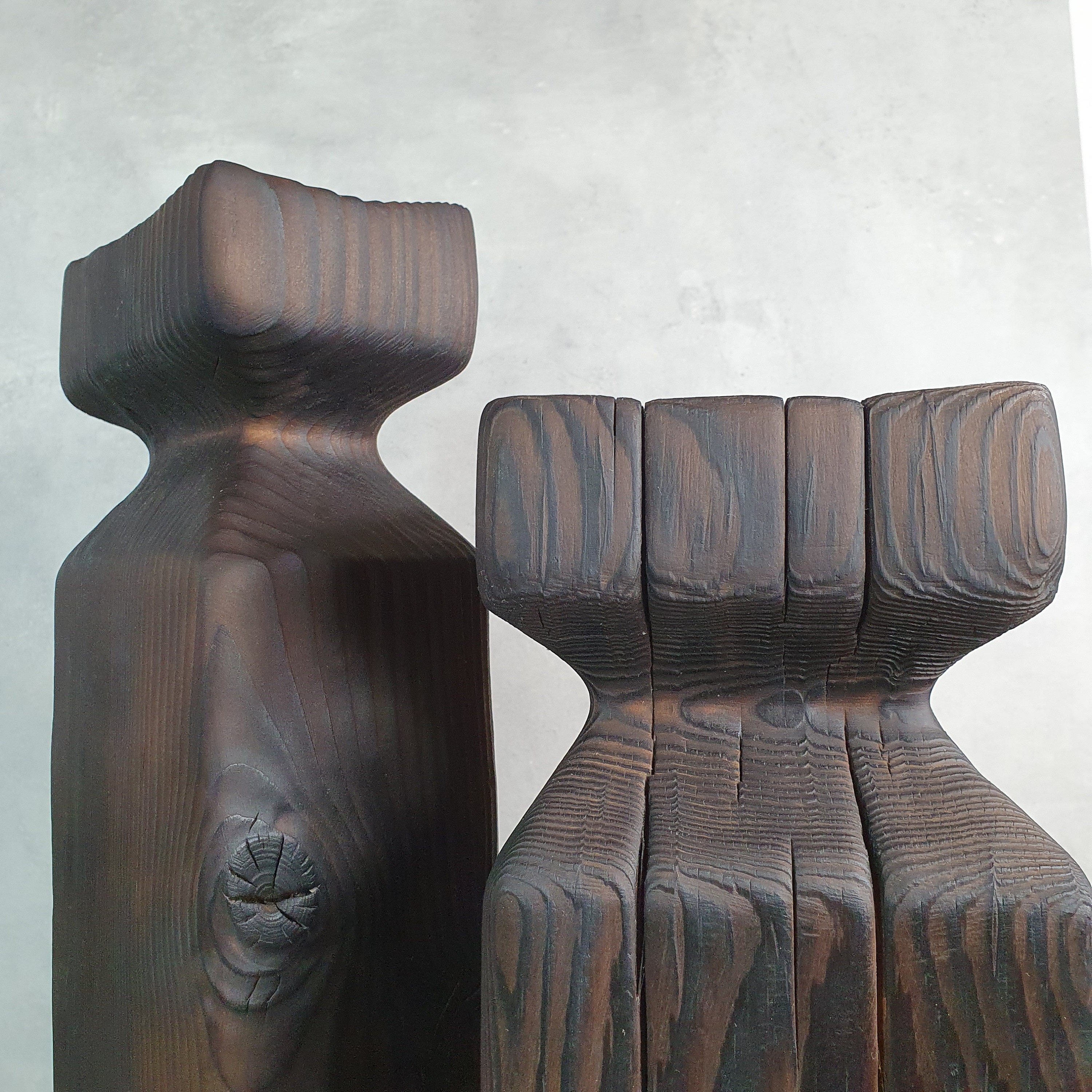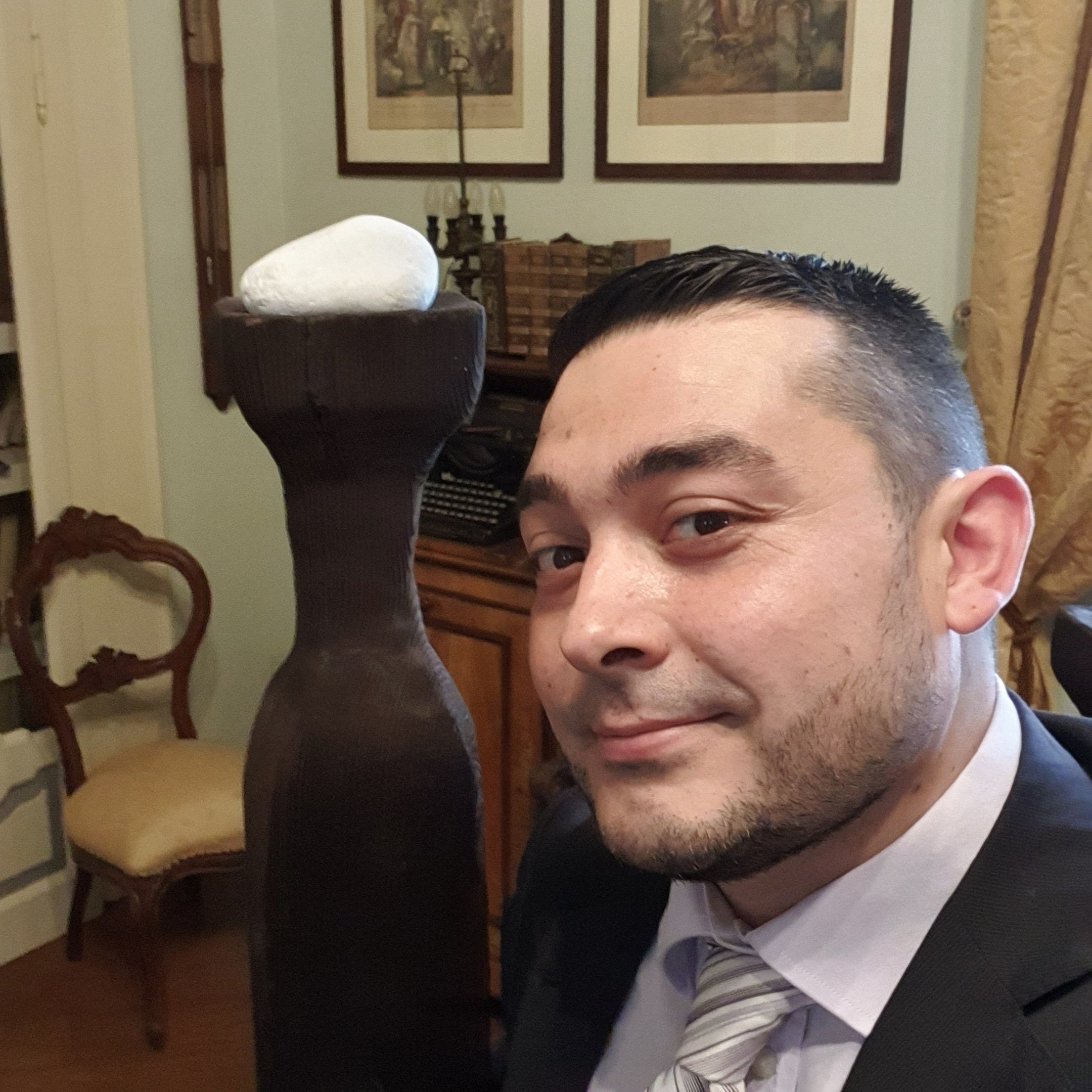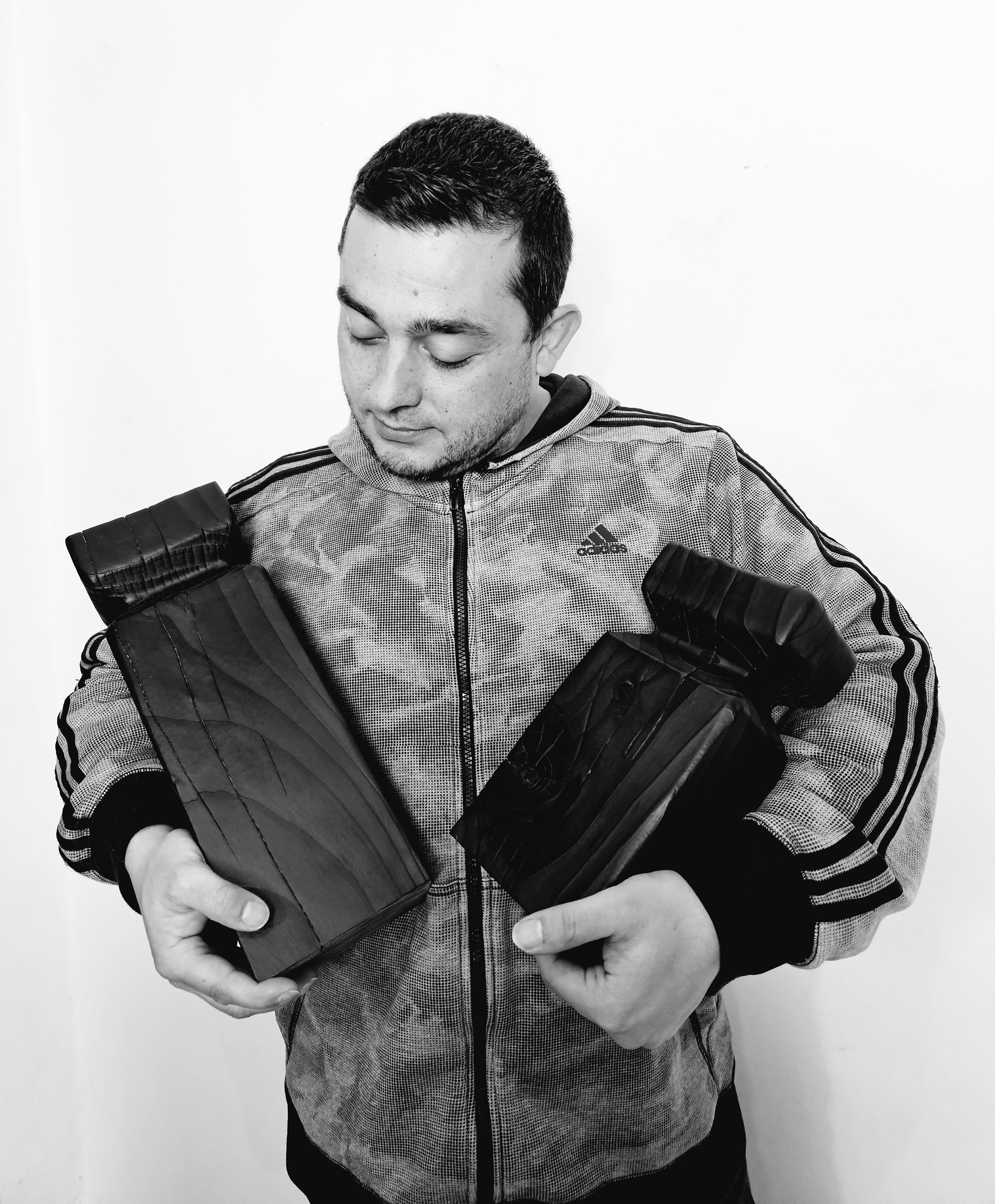
Totus Totem is the avatar of the person who advances in life despite adversity and gets up after each fall.
It is the one who carries his own burden without ever complaining and who with audacity and determination achieves every goal.
It is the typical resilience of human being.
Carved in wood, forged by fire, it is a completely natural and sustainable work.
Totustotem by Italian sculptor Dean Marino is an exquisitely crafted wood sculpture that combines traditional wood burning art and minimalist design.
With a distinct Scandinavian flair, it creates a stunning visual impact ideal for modern Japandi decor. The beautiful wood carving of this sculpture creates an artful touch to any room, while its small size makes it perfect for table sculptures. Its subtle elegance brings a Wabi-Sabi aesthetic to your decor, providing a perfect balance of minimalism and a unique character.
Its intricate details and masterful craftsmanship make the Totustotem a stunning addition to any home or office. Whether you’re looking for a statement piece or a little sculpture to add to your minimalist decor, the Totustotem is sure to add a unique and timeless touch to your space.
Who is Dean Marino?

Presentation by Dino Santina (director of the Brescian Artists Associations)
" Dean Marino (Marino Piotti) A seven-hectare atelier to create his works.
An adult vocation, a self made artist, a great freedom of expression. Here is Marino, there is no need to ask him many questions because he is a river in flood (like his Mella, which comes from the Maniva and flows into the Oglio after 96 kilometers, when it is swollen after heavy rains).
On the other hand he worked as a merchant for a lifetime, he did not talk about art and only in 2019 did he discover his vein, following, as much as he needs, the wabi sabi, the Japanese philosophy that praises simplicity and imperfection in the beauty that passes.
In his mountain house, surrounded by seven hectares of meadows and woods, together with his dogs and goats, he finds energy, inspiration, he does not draw, he does not paint, he chooses the materials, recycled wood, stones without hiding their defects, indeed them exalts with the work of his hands, under the dictation of the heart and intuition.
On the other hand - he says - Mother Teresa of Calcutta was a physically small woman, not beautiful, she came from Albania, a country then behind the curtain, yet she became a great world star, known, loved, appreciated. And he did good, so much good. Here the art of Marino Piotti is a bit like the human story of this nun. He does not cut the tree, when a living being, like a piece of wood, like the pole of a roller shutter, has finished its use, he takes it back and makes it come back to life with his art, with his honest message.
He prefers, as if to propose a unity of purpose, to create singles, couples or trios, brush them by hand, dig them to a minimum, create an armor with fire, giving the material a state of intangibility from external elements (remember? plant a pole in the ground, it rots quickly if it is not treated with suitable materials or, as Marino does, with the gentle and wise use of fire).
Sometimes he also works metal as if to redeem it from the damnatio ad metalla, the sentence to forced labor practiced in ancient Rome Marino Piotti's works, depending on their size, can be placed on the table, in the entrance of the house, in a corner of the room.
They are not furnishings, they are not furnishings, they are works of art that adorn your home; they are material regenerated with new life that temper the spirit and the wisdom of our life. "

